Knowing a bike's geometry can help you understand how it will handle, feel and what comfort it can offer. It can also help you compare different bikes and help you understand what geometry you are best suited to.
Most geometry charts can be found on manufacturer websites, although what the charts include vary. Most manufacturers will at a minimum include size, head and seat tube lengths, top tube length, wheelbase and chainstay length. Many also include stack and reach measurements, but fork rake, bottom bracket drop and trail are not as common.
It's one thing to know what the numbers are, it's another thing to know what they mean. This article spells out what each measurement refers to and how it is taken, along with how it influences ride quality and what you should be looking out for. This information can be a little dry, but stick with us as it will help inform your future bike purchases and is applicable to any type of bike.
Anatomy of a bike
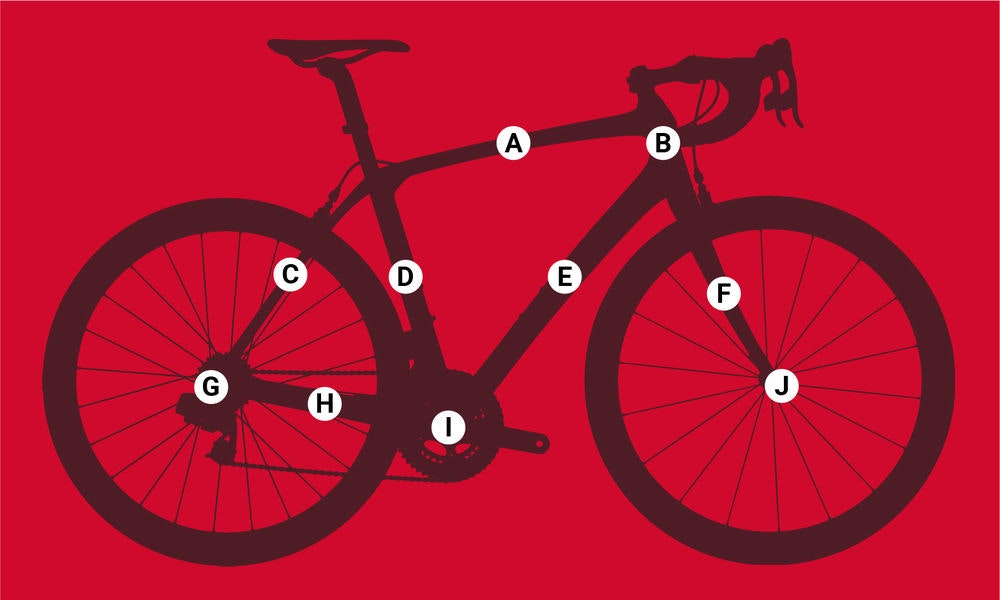
Before we kick things off, here's a key chart that highlights the key areas of the bike that are used to take the measurements from.
A - Top Tube
B - Head Tube
C - Seat Stay
D - Seat Tube
E - Down Tube
F - Fork
G - Rear drop out
H - Chain Stay
I - Centre of Bottom Bracket
J - Front drop out
Size
It's important to know straight off the top that bikes are not the same in terms of geometry and size. When manufacturers refer to the size of a bike whether it be via description like 'small', 'medium' or 'large' or via a measurement like '51cm', '54cm' or '56cm', those measures are not universal or governed by any standards, therefore knowing how to read a geometry chart is vitally important when comparing different bikes and manufacturers.
Bike frames are commonly measured in centimetres representing the length of the seat tube. A description of the frame size based on this measurement is then allocated, for example, a manufacturer may measure the seat tube length of a bike as 51cm, and then describe it is a 'small' frame. The same measurement could also be described as an x-small or small/medium depending on the manufacturer, style of bike or even region the bike is being sold. Therefore the quoted size of a bike isn't so useful when comparing across brands.
Stack and Reach
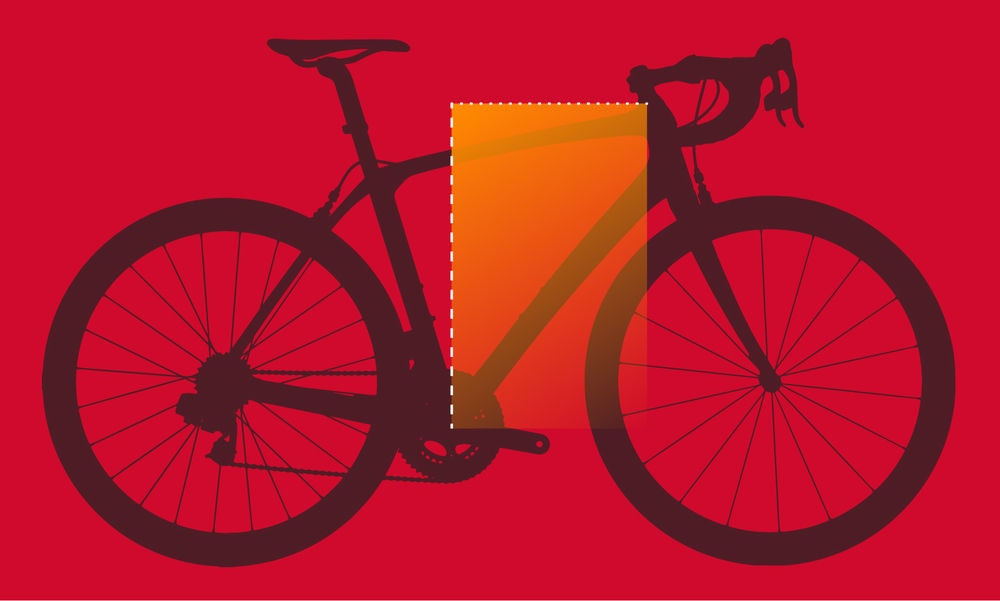
The two most fundamental elements of frame geometry are stack and reach. Knowing the bike's stack and reach will allow you to compare between different manufacturers and immediately know if it will fit you, regardless of how it is described or what the seat tube measurement is.
Stack is measured vertically from the bottom bracket to the top of the head tube. This gives an indication of how tall a frame is. For example, endurance road bikes will typically have greater stack than more race orientated road bikes.
Reach is measured horizontally from the bottom bracket to the top-centre of the head tube. This gives an indication of how long a frame is. Looking to road bikes, performance race bikes will typically have a longer reach than endurance bikes to stretch a rider out, creating a lower frontal profile to improve aerodynamics.
Reach is also sometimes used to describe a rider's reach which is different to the frame reach. Rider reach refers to the rider specifically and is measured from the tip of the saddle to the end of the stem. Regardless of the frame reach, a rider's reach can be manipulated by changing the saddle set-back position and stem length.
Head Tube
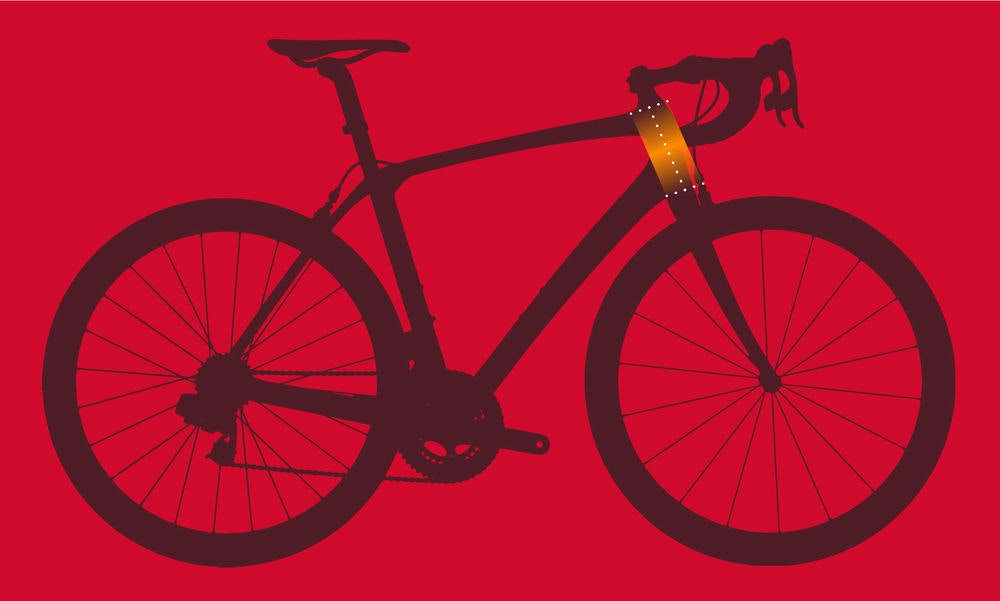
The head tube has two key measurements that will influence a bikes handling; the angle and the length.
The head tube angle refers to the angle of the head tube to the ground and will commonly be described as either 'slack' or 'steep'. A slack head tube angle requires more effort to steer but performs better at slow speeds. A steep head tube angle is found on performance road race, requiring less effort to steer which is better for high-speed handling. Mountain bikes will generally have a slacker head tube angle than road bike to provide greater stability on rough, technical trails.
The head tube length is measured from the bottom to the top of the head tube. Bikes with a long head tube raises the front end of the bike, putting the rider in a more upright position. Bikes with a short head tube lower the front end of the bike, reducing the frontal profile of the rider, improving aerodynamics.
Fork Rake and Offset
Fork rake or fork offset is a key factor in the handling of a bike. To understand fork rake, imagine a straight line continuing from the centre of the fork’s steerer tube all the way to the ground. The amount that the fork is offset from this imaginary line is known as fork rake in road bikes, or fork offset in mountain bikes. Increasing the offset will make steering faster, conversely decreasing it will slow it down. Fork rake is only part of the steering story, as a greater fork rake will increase the wheelbase, which is prevalent on endurance bikes to create stability.
The below image shows an example of how an increase in fork offset or rake which reduces the amount of trail and as a consequence speeds up the bike's handling.

Trail
Trail can be a complicated element of a bikes geometry to explain but stay with us as we'll try to break it down. Trail is a combination of the head tube angle and the fork rake and can be thought of as the tyre contact point trailing behind the steering axis.
The short explanation is a small amount of trail equals a 'fast' handling bike, while greater trail equals a 'slow' handling bike. Manufacturers will manipulate the headtube angle or amount of fork offset to make the handling suit the needs of bike.
To imagine this, think of a performance race bike with a steep headtube and increase fork offset, which equals a small amount of trail and a 'fast' handling bike. Now think of an endurance bike with a slack headtube angle and small fork offset, which equals a large amount of trail and a 'slow' handling bike. The fork rake (offset) can also be manipulated to increase (or decrease) steering speed. Mountain bikes for example typically have head tube angles 70 degrees and below, so in order to speed up the steering, often the forks are offset to greater amounts.
'Fast' handling is good at high speeds, requiring less rider input but can be described as twitchy as it is so responsive. 'Slow' handling takes more work to steer, providing greater stability and smoother handling, but is less reactive at speed.
The below image shows an example of how a steeper headtube angle reduces the amount of trail and as a consequence will speed up the bike's handling.

Seat Tube
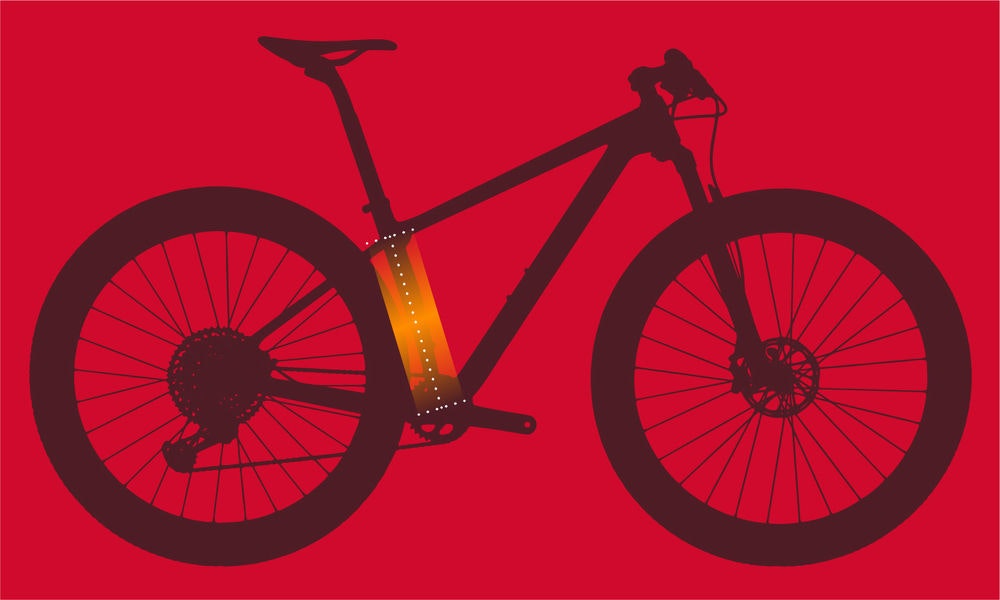
The seat tube angle refers to the angle of the seat tube in relation to the ground. An easy way to think of this is to measure the seat tube angle against an imaginary straight line between the front and rear dropouts. The seat tube angle doesn't change as much as the head tube angle, generally sitting between 71-74 degrees regardless of the chosen discipline.
Changing the saddle set back position can virtually influence the seat tube angle, effectively making is slacker or steeper. Triathletes are the biggest protagonists of this, moving their saddle forward to recruit more glut and hamstrings when they are riding to save their quads for the run leg of the race. Saddle setback is measured horizontally from the tip of the saddle to the centre of the bottom bracket.
Seat tube length is measured from either the centre of the bottom bracket to where the top tube and seat tube meet (Centre-Centre or C-C) or to the top of the seat tube (Centre-Top or C-T). Effective seat tube length is another phrase you may encounter which is similar to 'stack', measuring the distance from the centre of the bottom bracket to where a virtual horizontal top tube would meet the seat tube.
Top Tube
The top tube is measured horizontally from the top tube / head tube junction to the seat tube. The measurement is referred to as the 'effective' top tube as bikes with a sloping top tube would provide inconsistent information. Where stack and reach measurements are not given, then the horizontal top tube measurement is the best way to compare bike sizes between brands.
Chainstay length
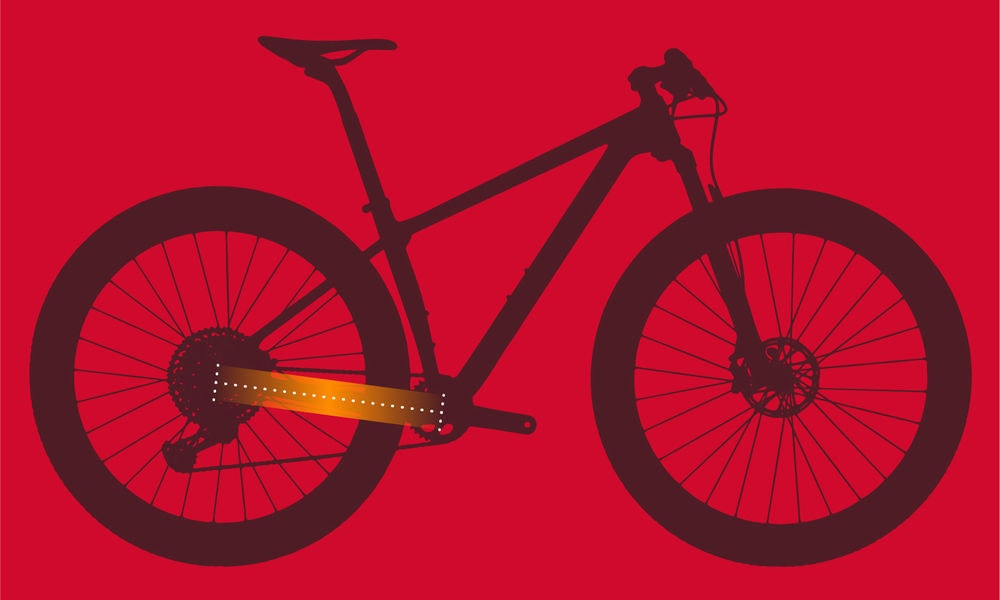
Chainstay length is measured horizontally from the bottom bracket to the rear dropouts and influences the length of the wheelbase and handling. Bikes with long chainstays improve stability, creating a longer wheelbase in the process, while bikes with short chainstays result in sharper handling and reduce the length of the wheelbase.
Wheelbase
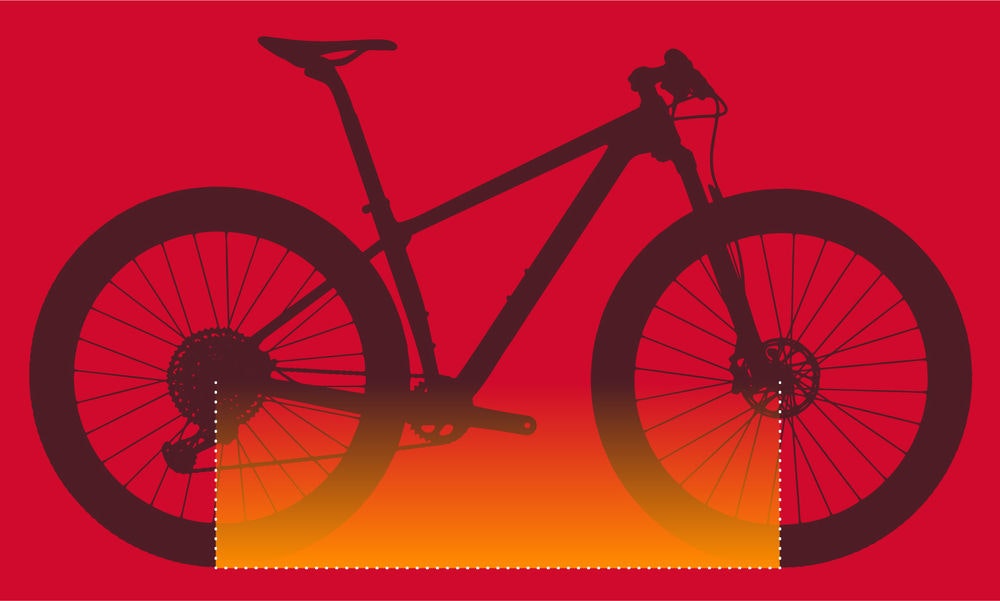
The wheelbase refers to the distance between the front and rear drop outs which coincide with the contact points to the ground of the front and rear wheel. Head tube angle, fork rake, frame reach and chain stay length will dictate the length of the wheelbase. Generally speaking, bikes with a 'long' wheelbase deliver stability and comfort, whereas bikes with a 'short' wheelbase leads to sharper handling.
For examples, touring and endurance road bikes offer longer wheelbases compared to more performance-orientated models. Likewise for mountain bikes, where cross country bikes will offer shorter wheelbases when compared to Enduro or downhill mountain bikes.
Bottom Bracket drop
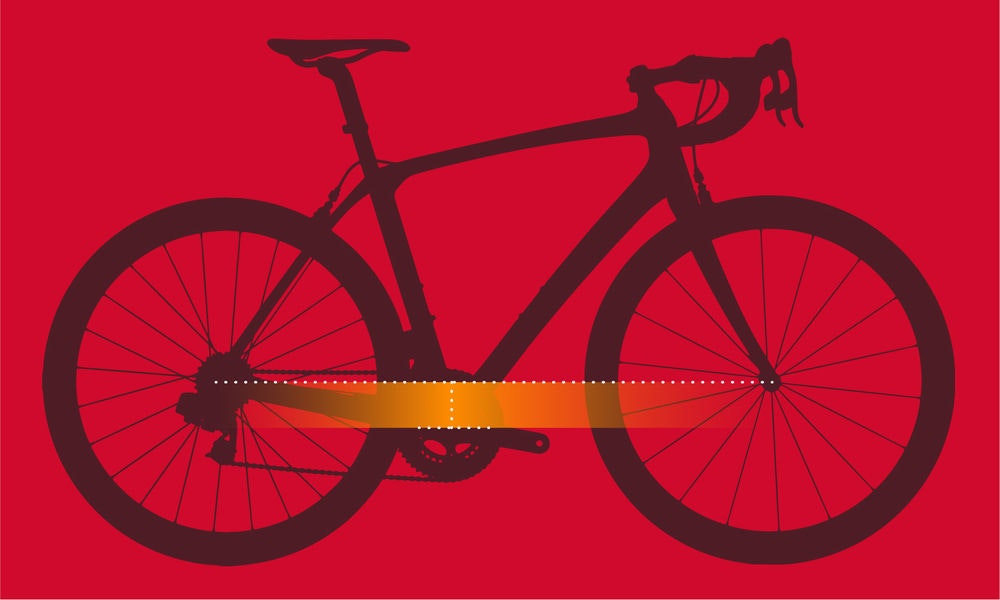
Bottom bracket drop represents the vertical distance between the centre of the bottom bracket and an imaginary horizontal line between the front and rear drop outs. The lower the bottom bracket drop the better the handling as the riders centre of gravity is lowered creating a more stable platform at all speeds. Bottom bracket drop will typically range from 60mm - 80mm depending on the purpose of the bike.
While lower is typically better, this does need to be balanced with pedal clearance when cornering, too low of a bottom bracket drop could lead to you touching your pedal on the ground and crashing. It also needs to be balanced with the trail as the trail will dictate the front end of the bikes handling, while the bottom bracket drop will impact the rear of the bikes handling, balance is the key.
Often bottom bracket drop is confused with bottom bracket height, which is the distance between the ground and the centre of the bottom bracket. This gives an indication to how much clearance the bike has which is important for mountain bikes that have to negotiate obstacles. Bottom bracket drop is considered a more consistent measurement as it isn't effected by tyre volume.
Other measurements
Some measurements won't influence the frame specifically but do appear on geometry charts, so we thought it worthwhile to run through them as well.
Stem Length
Stem length varies based on bike designation, brand and even frame size and so is often one of the first things changed to suit a rider's flexibility or riding style. As mentioned, increasing the length of the bike's stem can increase the rider reach, stretching them out and creating a lower frontal profile. Riders may also have a short torso and long limbs or be hyper-flexible which is another reason the standard stem may need to be swapped out. Conversely, a rider with poor flexibility or those who prefer a more upright riding position may opt for a shorter stem.
Stem length is directly linked to the steering arc of the handlebars and so has a huge effect on a bike's handling. For this, most bike manufacturers select stem length based on optimal fit and handling, and so changing the stem length greatly can have negative effects. Generally speaking, shorter stems allow for quicker handling, while longer stems slow things down. Stem length is intertwined with how head angle and fork rake affects bike handling – it's become a key ingredient in modern mountain bike design.
Handlebar Width
Handlebar width on road bikes is measured either 'centre to centre' and referred to as 'C-C' or 'outside to outside' and referred to as 'O-O'. Centre to centre is the most common method of measurement and is often horizontally measured from the centre of the lever hoods. Outside to outside is measured from the outside of each lever hood, hence creating a larger figure. It's important to know which 'handlebar width' measurement is being described as a 2cm difference could feel drastically different. It's also important to know that some brands measure their bars at the bottom drop, which may affect the actual size too. Handlebar width follows a similar pattern to stem lengths, the smaller the bike, the narrower the bars. Mountain bike handlebars are always measured as the full width, from end to end.
Narrower bars have the benefit of improving aerodynamics by reducing a rider's frontal profile but can be uncomfortable and create 'twitchy' handling. Wider bars create more stability and greater leverage which is great for sprinting or climbing but can make steering a little slow. As you can imagine mountain bikes have much wider bars than road bikes improve stability and control.
Handlebar Reach
Handlebar reach is a measurement on road bike handlebars that is only recently getting attention. It refers to the distance the bar extends forward from the clamp area. It is closely related to stem length, as a short reach handlebar may need to be accompanied with a longer stem. Typically speaking, modern endurance road bikes are coming with shorter reach handlebars, while race-focused models still use a longer reach as it allows for a more aggressive riding position.
Crank Length

Crank length is an important measurement to know in relation to other frame geometry measures because it may influence your seat height and potentially other areas such as handlebar height and reach. Most bikes will come with cranks between 170mm and 175mm, but it is possible to get cranks ranging from 165mm to 180mm depending on rider preference.
Our article explaining road bike groupsets delves further into crank length and outlines the pros and cons of choosing shorter or longer cranks.
Seat Post
There are several seat post measurements that may or may not appear on geometry charts and descriptions. In order to prevent returns and help buyers select the right sized bike, many manufacturers that sell directly to the public with stipulate a maximum saddle height. Although most geometry charts measure the seat tube length to provide the frame size, the length of the seat post may vary depending on whether the seat post is integrated or has restrictions on its extension.
The saddle set back may also appear. This describes how far forward or back the saddle clamp sits from the centreline of the seatpost. Ranges could be anywhere from 15mm-35mm (or greater) depending on the type of bike and manufacturer.
Little to do with geometry, the seat post diameter is also commonly measured and is typically comes in a 27.2mm and 'oversized' 30.9mm or 31.6mm. Oversized seat posts provide stiffness and strength, whereas standard seat posts provide more in the way of comfort. Aero seat posts and plenty of other sizes available means there's no such thing as a 'standard' seatpost diameter.
Now that you know everything there is to know about geometry charts, check out other BikeExchange guides to provide all the info you need to know on a variety of topics;
Follow BikeExchange: Email | Facebook | Twitter | Instagram | YouTube | STRAVA





